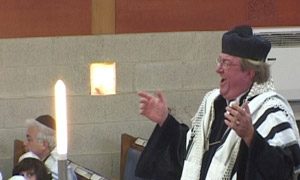Zohar Kaniel | Rites and Rituals
Rainbow Warriors, 1997, photograph taken at a Rainbow Gathering in Greece
Once a year the “Rainbow Tribe” gathers at a secluded location in nature. Thousands of people from the all over world come together in an informal, nonhierarchical manner, creating a temporary community that cares for all its members on a voluntary and equal basis. Since the first gathering in Colorado at the end of the hippie era, the meetings have wandered from one site to another in different countries throughout the world. In each venue the tribal rituals are modeled after the era that preceded institutionalized religions and under the influence of the indigenous traditions: neo-paganism in Europe, Indian tribes in America, Canaanite and Bedouin tribes in Israel.
Rainbow is a unique tribe delimited spatially and temporally. Anyone may take part in the meeting without commitment and without forgoing one’s usual way of life, provided the he respect the tribe’s rules. The Rainbow gathering functions as a transient ex-territory that provides an alternative to the modern world, drawing on a blend of unordered New Age spiritual perceptions. Some identify the Rainbow gatherings with the Rainbow Warriors myth, attributed to the Indian Hopi tribe. According to that myth, when the land becomes polluted, and the water undrinkable and people die, the Rainbow Warriors will return to the earth, and people of all nations and colors will live in harmony; they will cleanse the earth and bring peace and brotherhood to humanity. Probably originating in a 1960s book, the legend expresses the major values adhered by the tribe members, such as equality, liberalism, peace, and harmony amongst men and between man and nature. At the same time, the gathering is typified by drawing away from the modern world, referred to as “Babylon,” and an active rejection of everything it stands for. When the gathering ends, tribe members leave the temporary utopia, returning to their ordinary lives.
